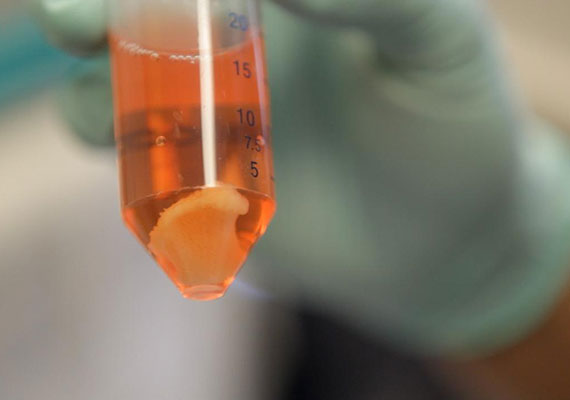Our Progenitor Cells
- Home
- Our Progenitor Cells
Our Progenitor Cells

Our Progenitor Cells
Ischemia-tolerant mesenchymal stem cells, or itMSCs, are “trophic” cells that move throughout the body and release growth hormones and proteins into injured tissue, saving the damaged cells from dying and establishing the ideal environment for the newly mobilized cells to multiply and heal. SanoStem’s itMSCs (SanoMSC) are grown utilizing our in-house technology after being isolated from 1 single donated bone marrow.
Ischemia-tolerant neural stem cells, or itNSCs, are multipotent, largely undifferentiated cells that produce the primary phenotypes of nervous system cells. Donated brain tissue is used to extract SanoStem’s itNSCs, which are subsequently grown utilizing our patented method.
ItMSCs and itNSCs are produced by SanoStem for use in FDA-approved clinical trials in the United States. Furthermore, we provide our progenitor cells to geographic distributors for use in research through ThermoFisher Scientific, our exclusive distribution partner, and for clinical trials that have been authorized by international regulatory bodies.
The following characteristics are among the unique qualities of SanoStem’s itMSCs (SanoMSC) and itNSCs (SanoNSC):
Ischemia tolerant: To counteract ischemia circumstances, SanoStem produces its progenitor cells in a hypoxic environment. ItMSCs, for instance, release more of the vital cytokines that promote healing, like VEGF and SDF-1. SDF-1 aids in the mobilization of the patient’s own progenitor cells, whereas VEGF is essential for the development of new blood vessels.
Immune privileged: Progenitor cells from SanoStem lack the HLA-DR antigen proteins, which could lead to rejection. Using flow cytometry analysis, each batch’s lack of HLA-DR expression is verified. During treatment, no immunosuppressive medications are needed.
Established purity: SanoStem upholds strict standards for every relevant biological sign that denotes the purity of cells. Moreover, lot-to-lot repeatability is indicated by thorough batch testing.
Verified potency: Progenitor cells need to release the right growth factors, cytokines, and hormones in order to function well in vivo. Additionally, the progenitor cells must exhibit the capacity to develop into particular tissue types, such as cartilage, neurons, or bone. Before releasing its progenitor cells for therapeutic use, SanoStem makes sure they fulfill the necessary requirements.
The Allogeneic Progenitor Cell Difference
Autologous and allogeneic cells are the two cell types now being studied for progenitor cell therapy for degenerative disorders. The patient receiving treatment provides the autologous progenitor cells. They are surgically removed, enlarged, and then given back to the original patient. Organ donations or healthy volunteers are the sources of allogeneic progenitor cells. These cells are grown and preserved for use in a variety of illnesses in the future. The competitive benefits of SanoStem’s allogeneic progenitor cell products are as follows:
